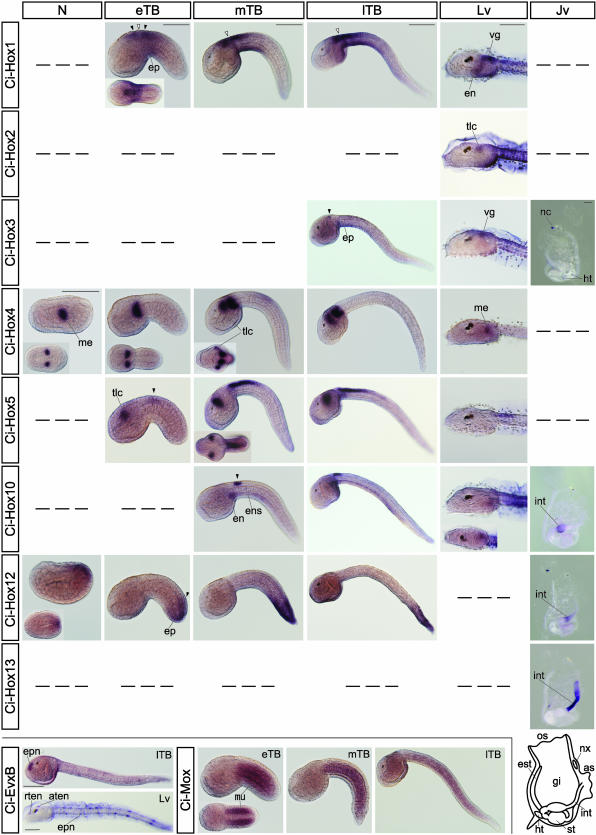Fig. 3.
Expression patterns of C. intestinalis extended Hox genes examined by WISH. WISH was carried out with nine Hox, two Evx, and one Mox genes by using specimens from fertilized eggs to juveniles, but only the genes that exhibited positive signals are shown. Thus, Ci-Hox6 and Ci-EvxA have been omitted. Also excluded are the stages, from the egg to gastrula, in which no signals for expression of any of the 12 genes were detected. Gene names are indicated on the left and stages at the top. For Evx and Mox genes, stages are indicated at the top. For all specimens, lateral views are shown, except for those of Insets, and the anterior is to the left. For Insets, the dorsal view is shown except for the Ci-Hox10 specimen at the larva stage, for which the ventral view is shown. For juveniles, anterior is to the top and dorsal to the right, except in the Ci-Hox3 specimen, where the dorsal is to the left. Filled arrowheads indicate the expression in the CNS. Open arrowheads indicate the gap between two expression domains of Ci-Hox1 in the CNS. Also shown are names of the tissues in which the expression was detected earlier in development. A dash signifies that signals were not detected at that stage. A schematic drawing of the juvenile is shown at the bottom right. as, atrial siphon; aten, apical trunk epidermal neuron; ep, epidermis; en, endoderm; ens, endodermal strand; epn, epidermal neuron; est, endostyle; gi, gill; ht, heart; int, intestine; me, mesenchyme; mu, muscle; nx, neural complex; os, oral siphon; rten, rostral trunk epidermal neuron; st, stomach; tlc, trunk lateral cells; vg, visceral ganglion. Stages shown are N, neurula; eTB, early tailbud; mTB, mid-tailbud; lTB, late tailbud; Lv, larva; Jv, juvenile. (Bars, 100 μm, which is, if not specifically indicated, applicable to all specimens below.)

